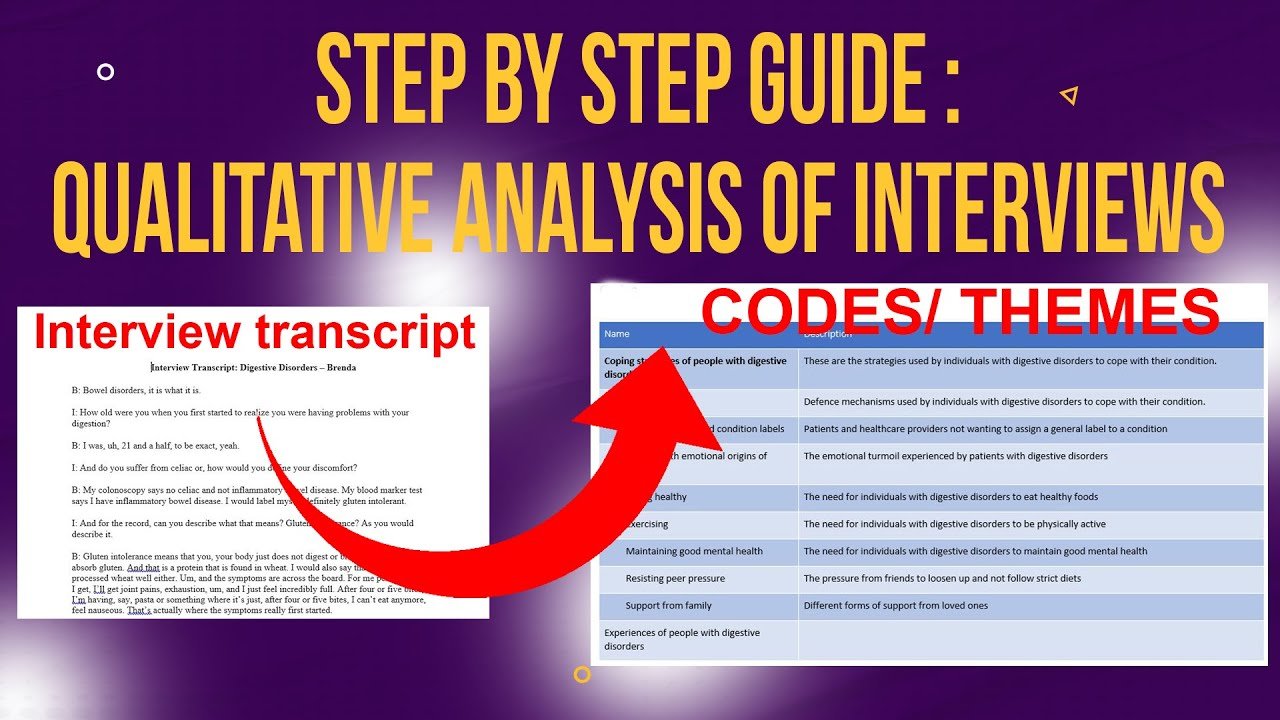How to do thematic analysis of interviews with Nvivo
Let’s look at how to analyse semi-structured interviews in qualitative research. I’m going to use Nvivo and the inductive approach to thematic analysis.
In this article, I’m going to help you go from semi structured interviews, such as this,
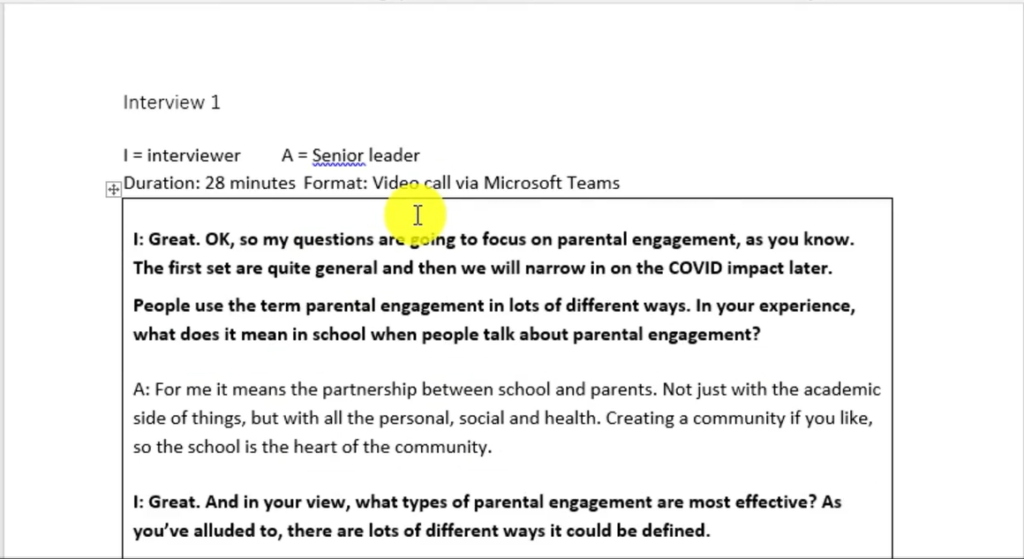
An Interview Transcript
To a complete and well visualized findings report like this.
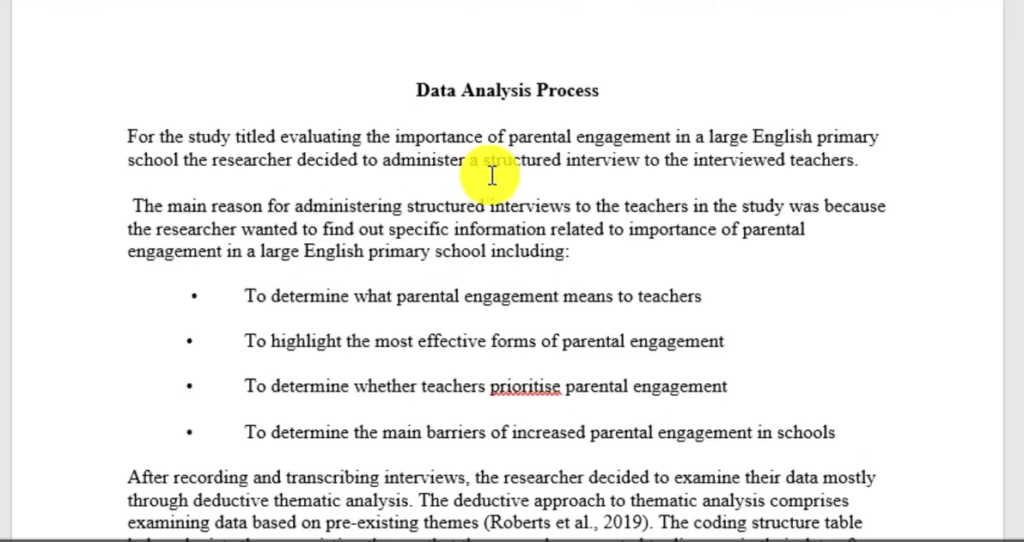
A Findings Report
The only way we move from having raw data, such as semi structured interviews, to cohesive and well-organized findings report, made up of themes, sub themes, codes, and participant statements, is by taking time to analyze and look for a pattern of shared meaning in semi structured interview data.
Now, there are a couple of decisions you need to make so that you can move from semi structured interviews to findings report.
These decisions include the approach of data analysis that you are going to take and the tool that you are going to use to analyze data.
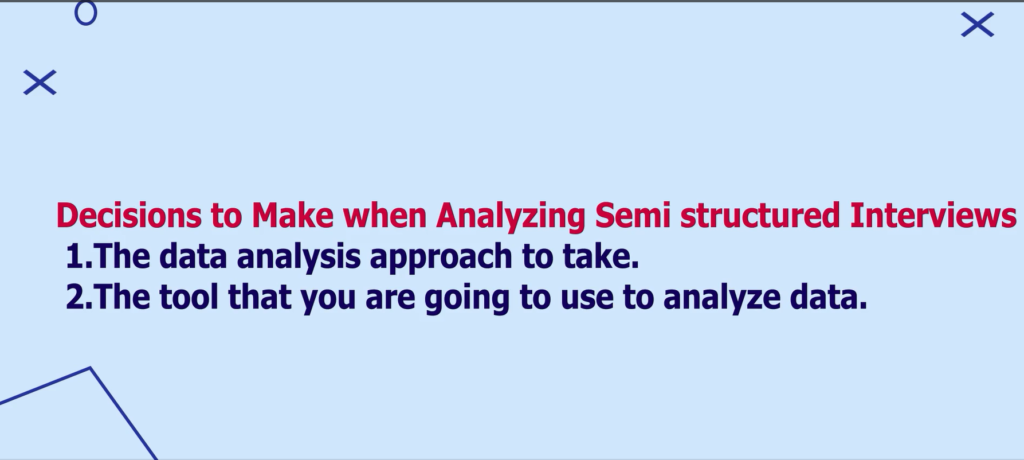
Decisions to Make during Data Analysis
Thematic Analysis
One of the most common ways of analyzing qualitative data, is using thematic analysis.
Thematic analysis is a qualitative research method that involves identifying, analyzing, and interpreting patterns of meaning in data.
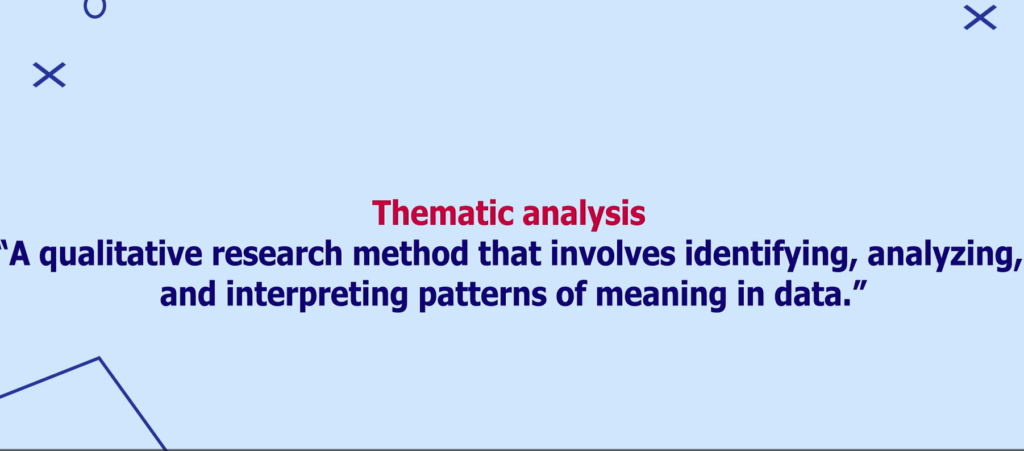
Thematic Analysis Definition
There are two main approaches to thematic analysis, which are inductive and deductive thematic analysis.
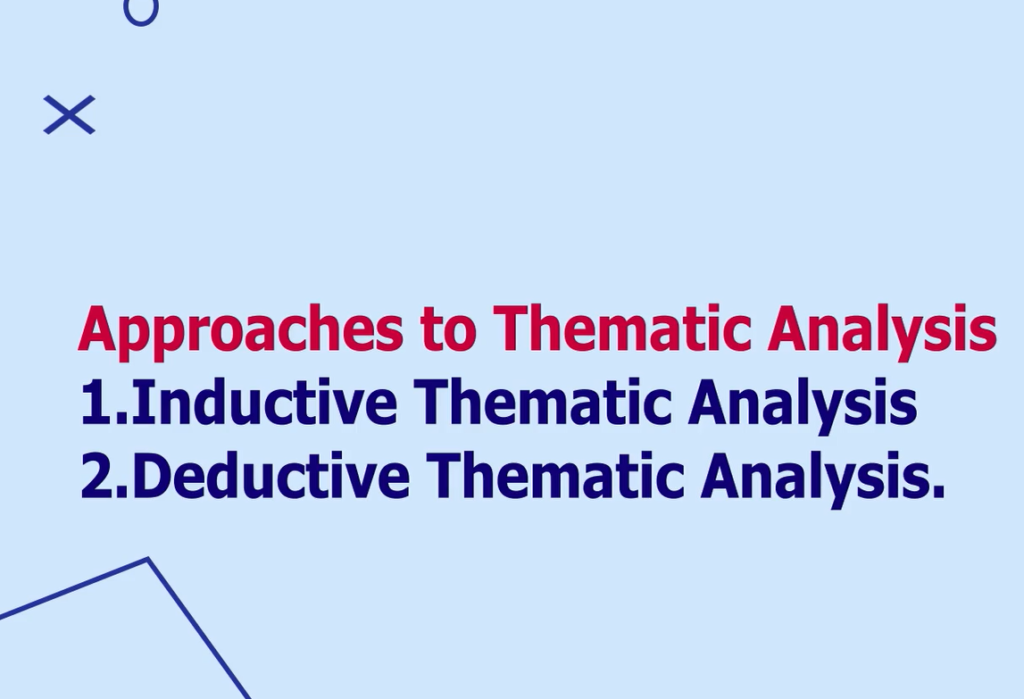
Approaches to Thematic Analysis
Inductive Thematic Analysis
The inductive approach to thematic analysis involves deriving themes from qualitative data without any preconceptions.
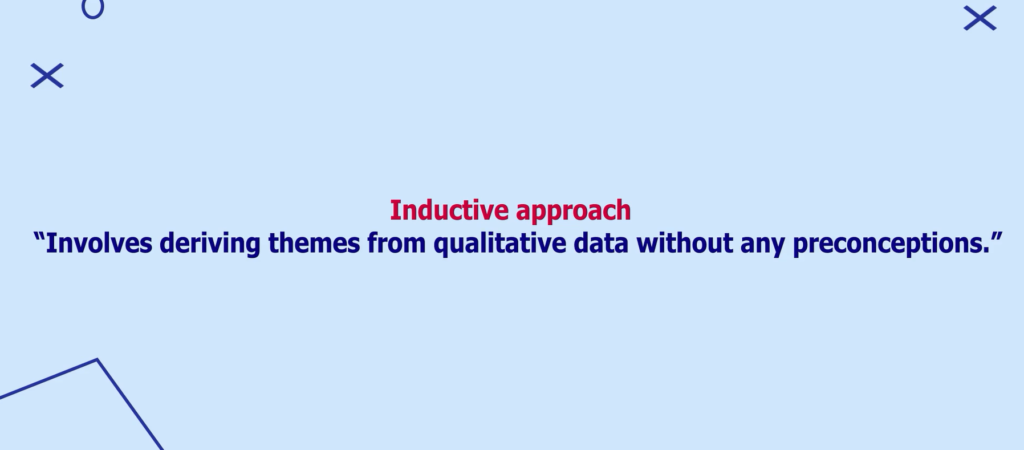
Inductive Thematic Analysis Description
That means that we dive into qualitative data such as semi structured interview transcripts, and formulate codes, subthemes and themes from what the data provides.
We do not come with preconceived ideas.
Deductive Thematic Analysis
The second main approach to thematic analysis is deductive approach.
The deductive approach to thematic analysis involves developing a predetermined set of themes and sub themes, and then diving into the qualitative data to look for codes to match with the predetermined set of themes and sub themes.
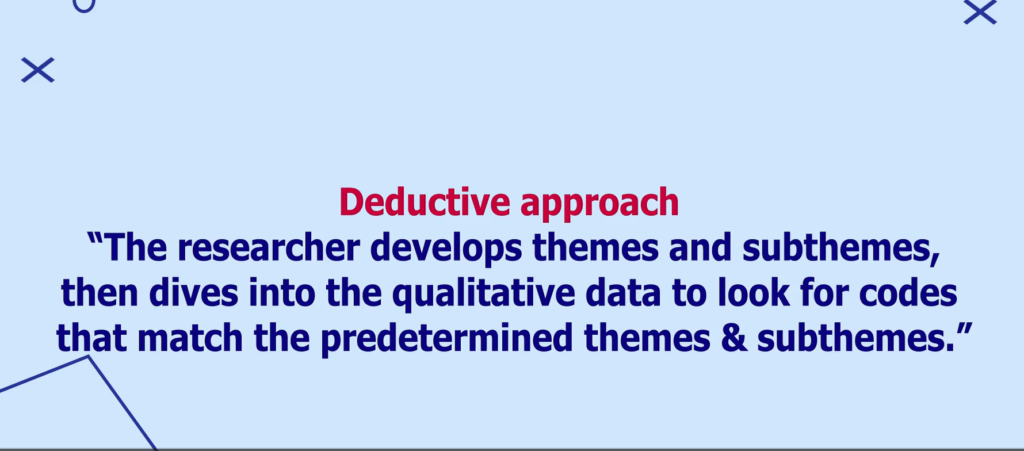
Deductive Thematic Analysis description
If you want to go into detail on the inductive and deductive approaches to thematic analysis, click this link Inductive and Deductive Step by Step
Approach to Data Analysis
In this article I’m going to analyze semi-structured interviews through the inductive approach.
That means that we are going to dive into the data and allow the data to inform the formulation of our codes, subthemes, and themes.
We are simply going to look at a pattern of shared meaning in the data to come up with codes and then look for a pattern of shared meaning among the codes to come up with subthemes and finally, look for a pattern of shared meaning among the subthemes to come up with the main themes.
Data Analysis Tool
Let’s consider the second major decision in analyzing semi structured interviews, which is the tool that I’m going to use to analyze the data.
For this article, I’m going to use the manual word by word coding option in Nvivo because I want the highest quality of codes, and I also want to have sub themes and themes.
Data Analysis Process
As previously stated, I will be using the inductive approach of thematic analysis to analyze my semi structured interviews.
One of the most popular approaches to conducting inductive thematic analysis is the Braun and Clark six step framework for thematic analysis, which includes familiarization with the data, generating initial codes, generating initial themes, reviewing potential themes, defining and naming themes, and finally producing the report.
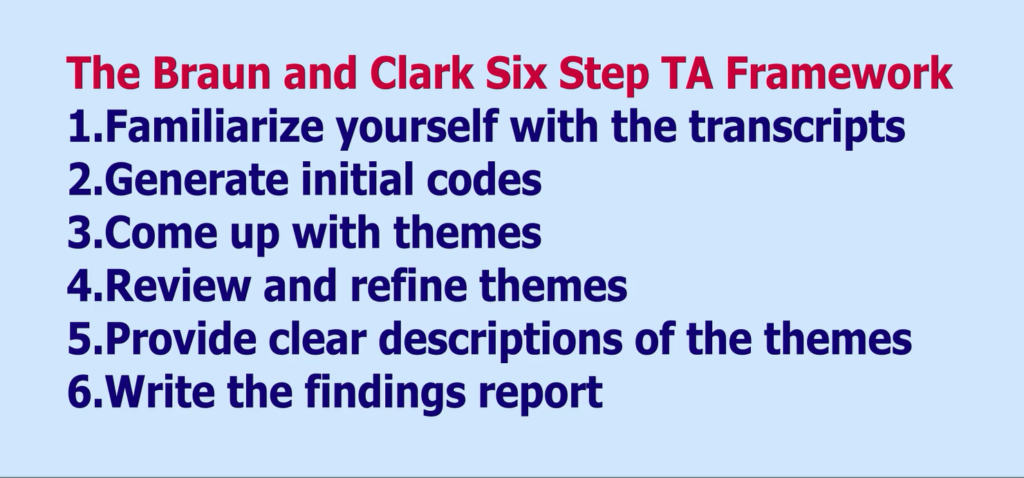
The Braun and Clarke Six Step Framework
Now, let’s follow the Braun and Clarke’s six step framework for thematic analysis to analyse two semi structured interviews for the study titled; Evaluating the Importance of Parental Engagement in a Large English Primary School.
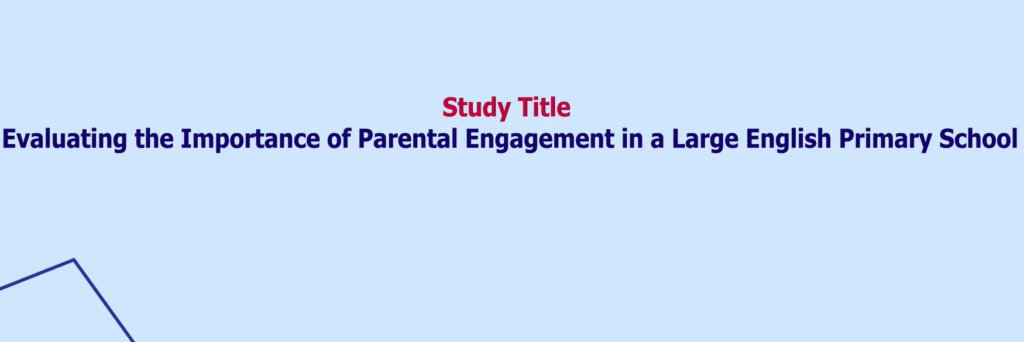
The Study Title
Remember, my objectives are;
- To determine what parental engagement means to teachers,
- To highlight the most effective forms of parental engagement.
- To determine whether teachers prioritize parental engagement.
- To evaluate the benefits of strong parental engagement in schools,
- To evaluate the challenges associated with strong parental engagement in schools
- To determine the main barriers of increased parental engagement in schools.
- To highlight examples of training and guidance teachers have received in relation to parental engagement.
Familiarizing with the Transcripts

Familiarizing with the Transcripts
Now, the first step of the Brown and Clark six step framework for conducting thematic analysis is familiarizing with the transcripts.
In this case, I only have two transcripts.
I would open these transcripts and read through them thoroughly.
These two interviews. Are what I will familiarize with.

The Two Transcripts
Generating Initial Codes
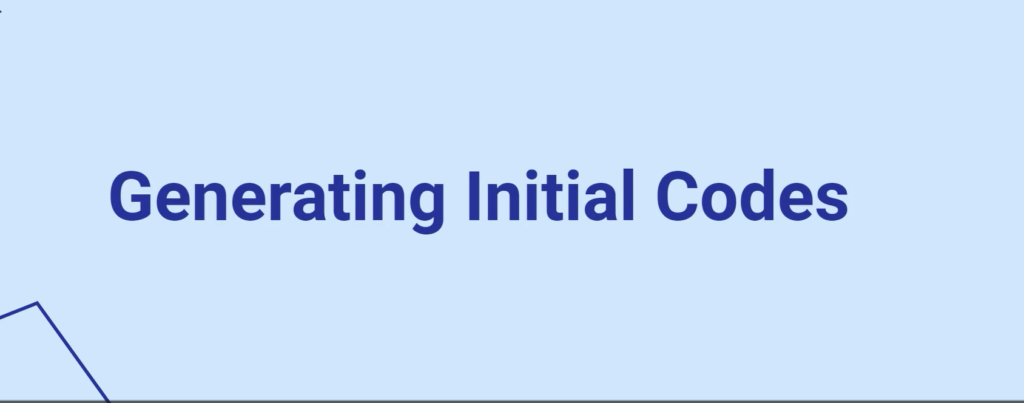
Generating Initial Codes
Then I move to the second step of the Brown and Clark six step framework for thematic analysis, which is generating initial codes.
For the purposes of this article, I’m using Nvivo to track my analysis.
Nvivo is one of the most reliable qualitative data analysis software.
I’m going to use Nvivo as you can see here. I’ll just call this project Parental engagement.
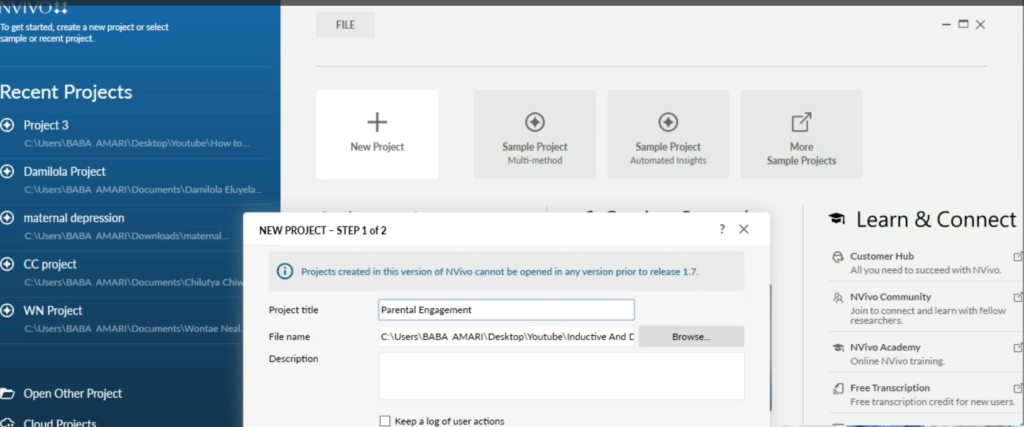
Project Parental Engagement is Created
I’m in the file section.
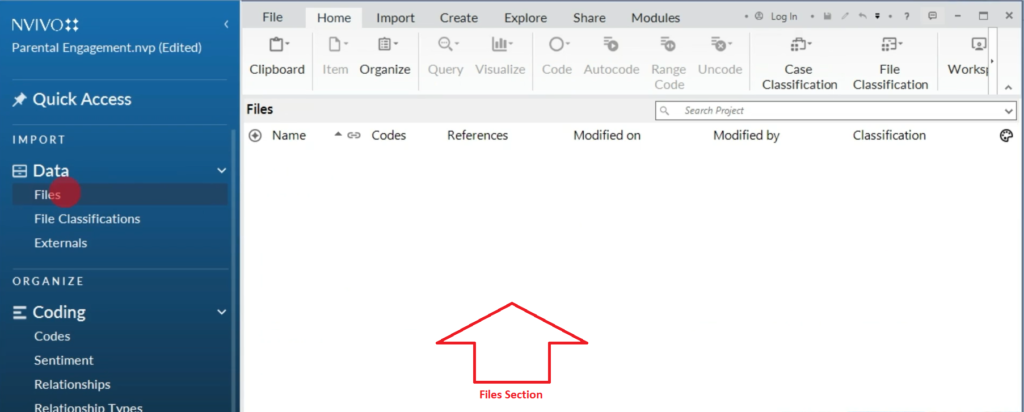
The Files Section
I go grab my two files which I want to analyze, drag and drop them inside Nvivo.
I can also import by going to import, files, and import these two files,
I have two transcripts. Now, I’m going to start generating codes.
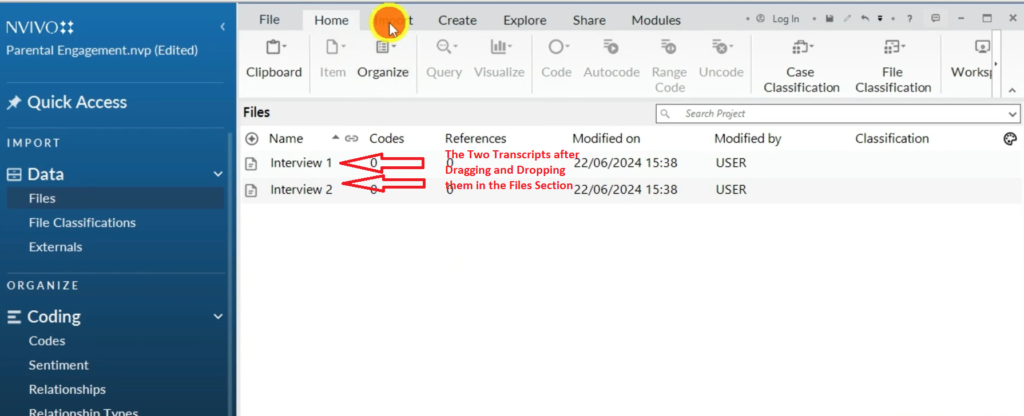
Two Transcripts in the Files Section
For this article, I’m going to use the inductive approach, which means that the data will determine the codes and themes.
I do not have a preconceived set of themes or codes that I will use for this study.
The analysis that I’m going to conduct inductively is the one that’s going to provide that.
Let’s go to codes and let’s start generating some codes here.
I click on codes, and let’s go to the question.
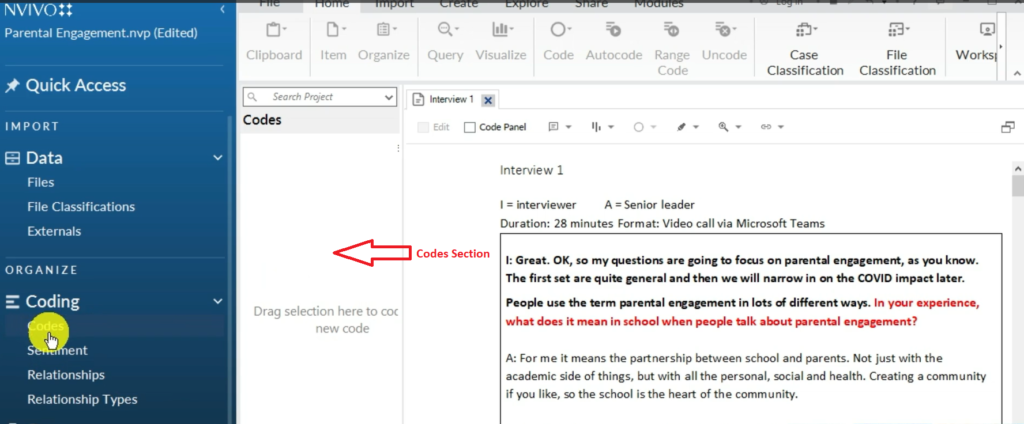
The Codes Section in Nvivo 14
Remember this is about parental engagement.
Let’s read here. “People use the term parental engagement in lots of different ways. In your experience, what does it mean in school when people talk about parental engagement?”

A Section of a Transcript in Nvivo 14
“For me it means partnership between school and parents.”
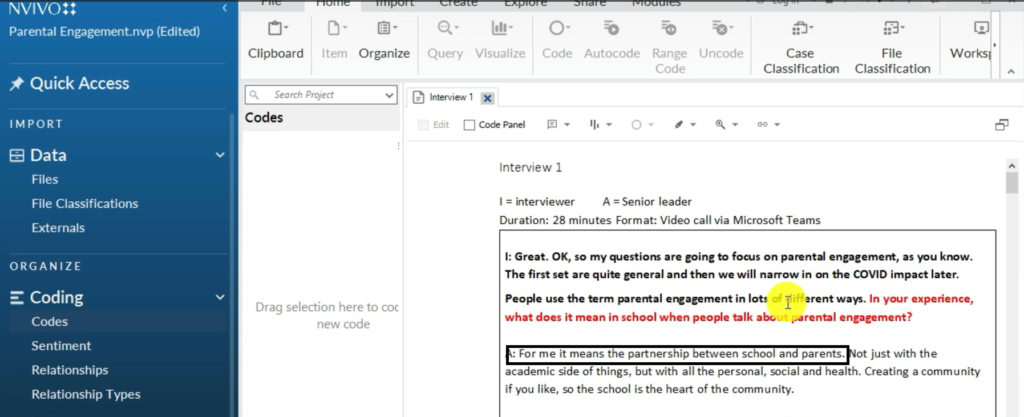
A Section of a Transcript in Nvivo 14
I can code this as partnership between school and parents, drag that statement and drop it in the codes section.
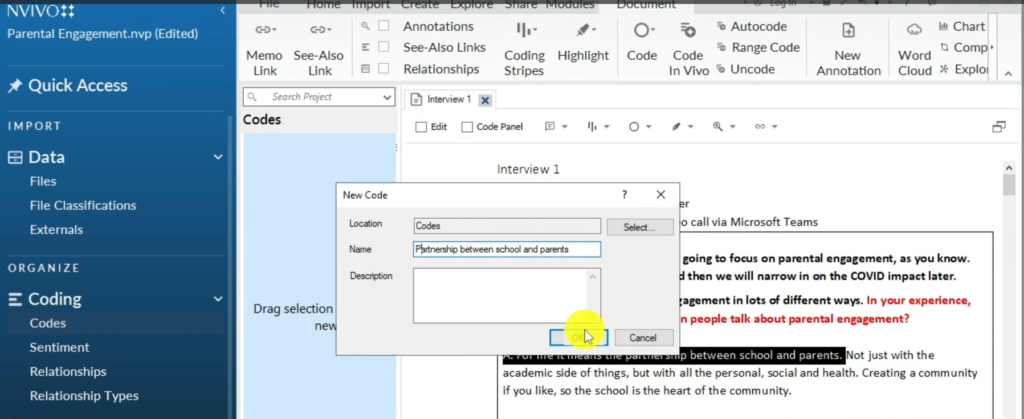
The Code Partnership between School and Parents is Created
That’s partnership between school and parents.
Now, “not just with academic side of things but with all personal , social and health.”
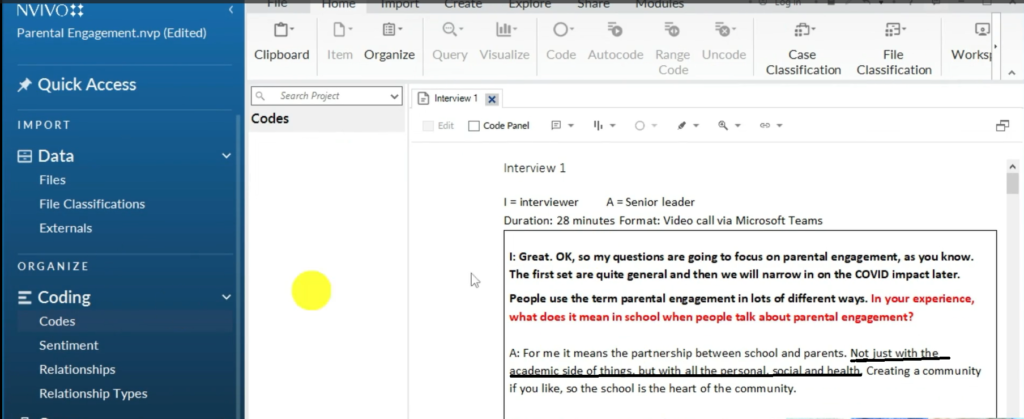
A Section of a Transcript in Nvivo 14
So, I can say, holistic partnership between school and parents.
I drag, drop, then I type in that code.
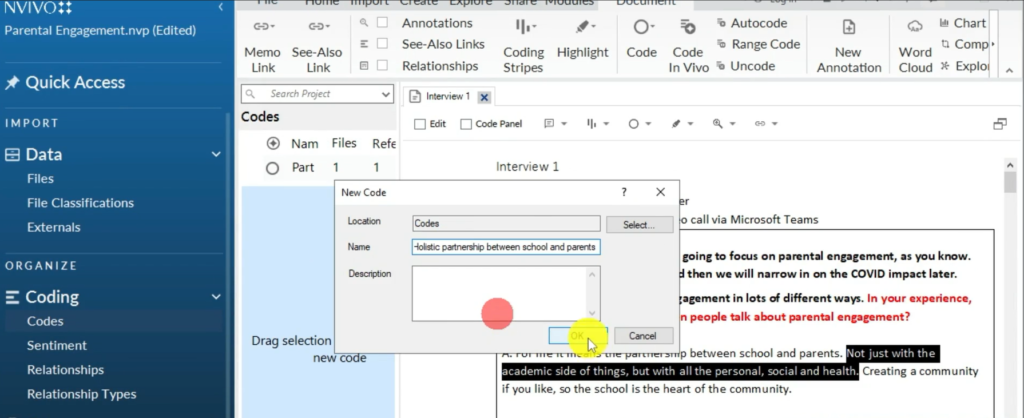
The Code Holistic Partnership between School and Parents is Created
“Creating a community if you like, so the school is the heart of the community.”
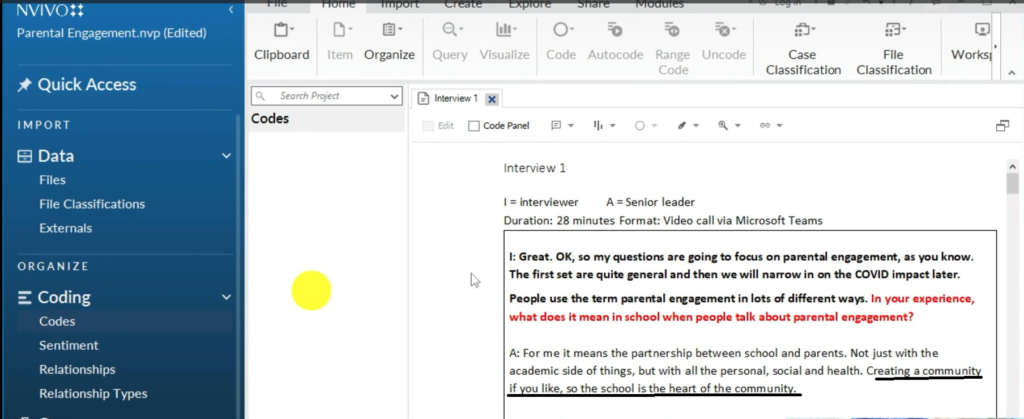
A Section of a Transcript in Nvivo 14
So, this statement, I drag and drop it.
“Creating a community with the school at the centre of the community.”
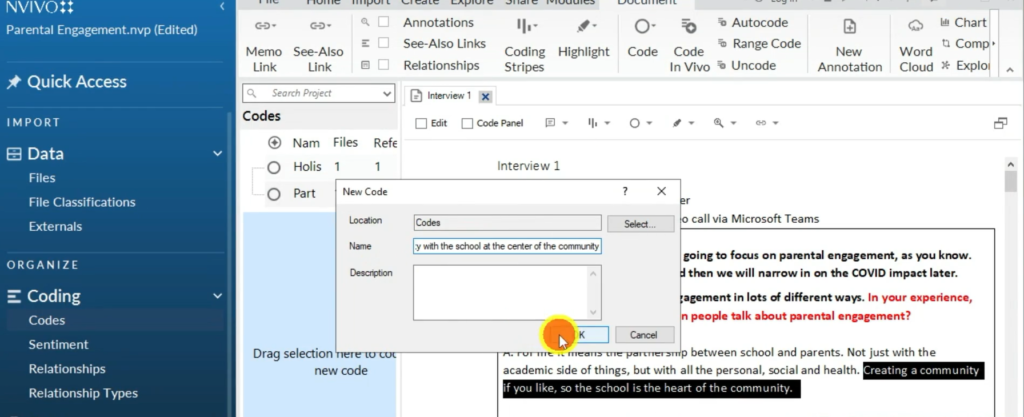
The Code Creating a Community with the School at the Centre of the Community is Created
I have the first codes for this first question.
Let me do another question.
“And in your view, what types of parental engagement are most effective? As you’ve alluded to, there’s a lot of different ways it could be defined.”
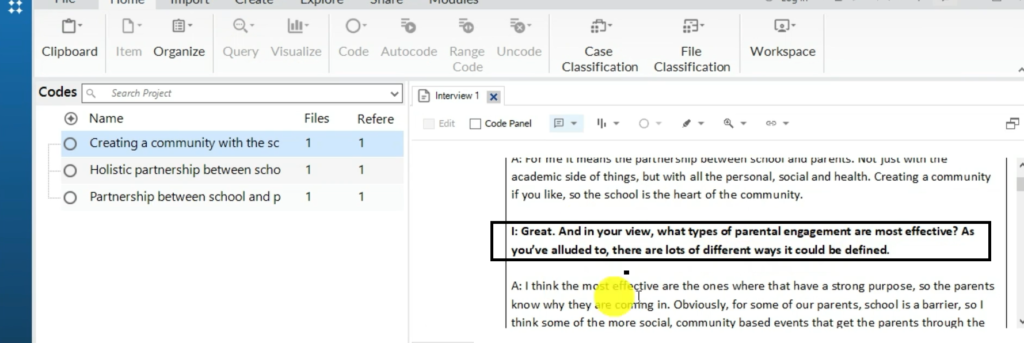
A Section of a Transcript in Nvivo 14
“I think the most effective are the ones that have a strong purpose, so the parents know why they are coming in.
Obviously, some of our parents school is a barrier, so I think some of more social, community-based events that get parents through the door, just for a coffee or a chat, are really important.“
So, the types of parental engagement that are the most effective include social and community-based events.
Drag and drop that, call this social and community-based events.
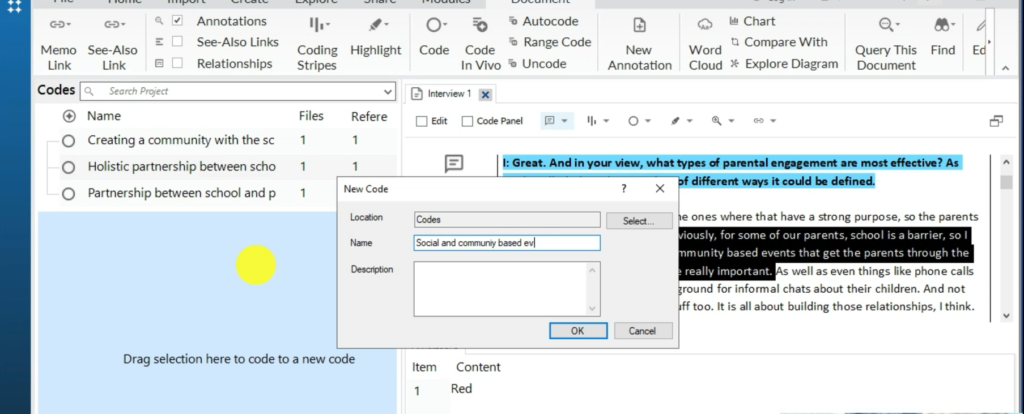
The Code Social and Community Based Events is Created
Click okay.
“As well as even things like phone calls.“
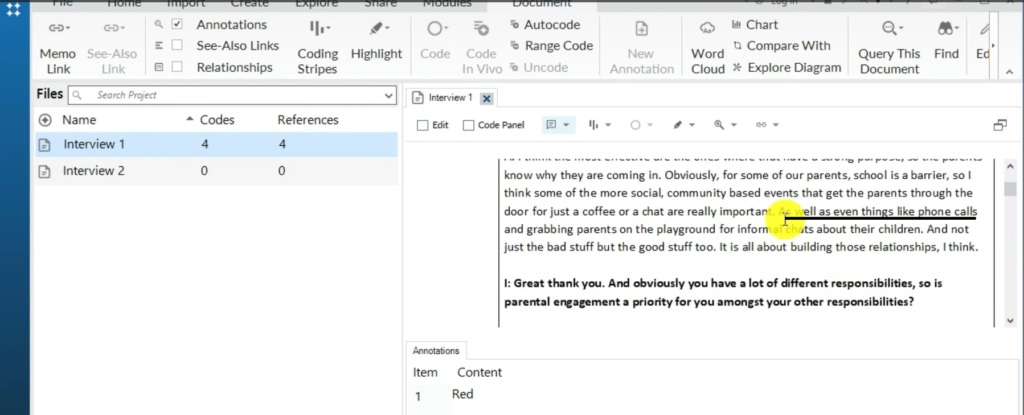
A Section of a Transcript in Nvivo 14
I want to drag this statement and drop it in the codes section and call it phone calls.
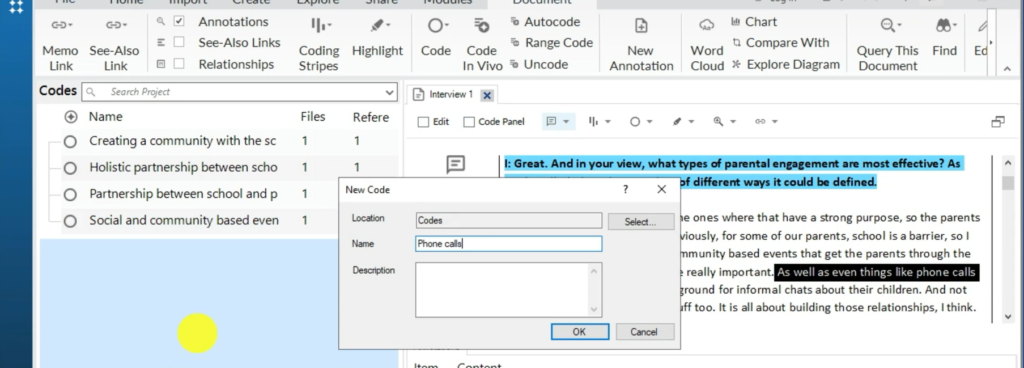
The Code Phone Calls is Created
They are a type of parental engagement.
And the questions, although we are doing inductive thematic analysis, the questions will also play a significant role in the formation of themes and sub themes, as you will see.
Let’s continue with this.
“grabbing parents on the playground for informal chat about their children.”
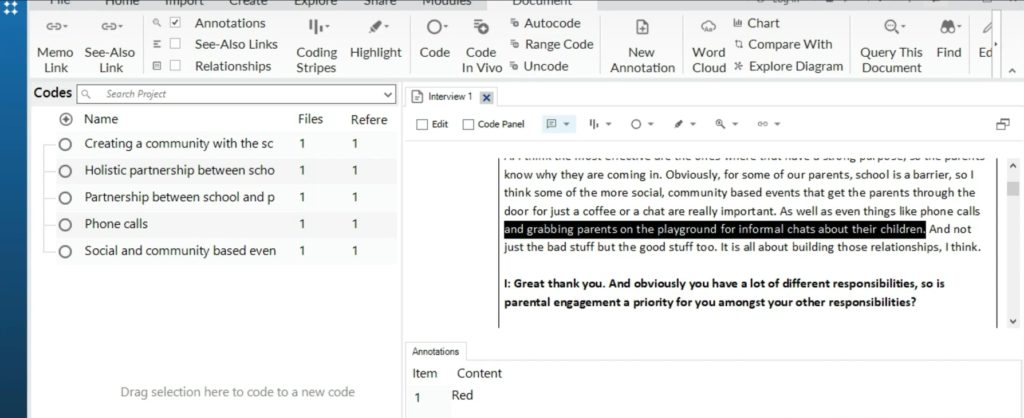
A Section of a Transcript in Nvivo 14
So, having informal, in person chat with parents about their children.
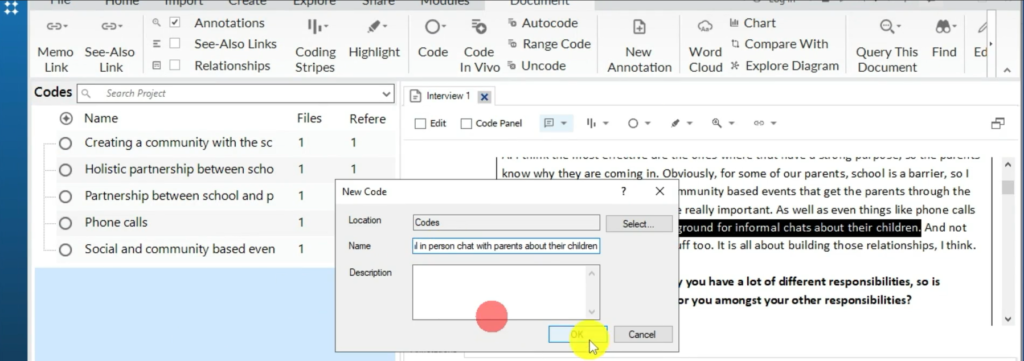
The Code having Informal In Person Chat with Parents about their Children is Created
Remember, the first rule of coding is that we only code information that’s important to our research questions, or research objectives.
Any other information that’s not important to our research objectives, we leave it out.
So that’s how you generate initial codes as the second step of the Brown and Clark six step framework for thematic analysis.
Generating Initial Themes
Let’s go to the third step of the Brown and Clark six step framework for conducting thematic analysis, which is generating initial themes.

Generating Initial Themes
Remember, we can have all these codes. I want to cut them because I hadn’t created a folder.
Now you can see I have my codes, which are colour coded. Let’s investigate the codes in red.
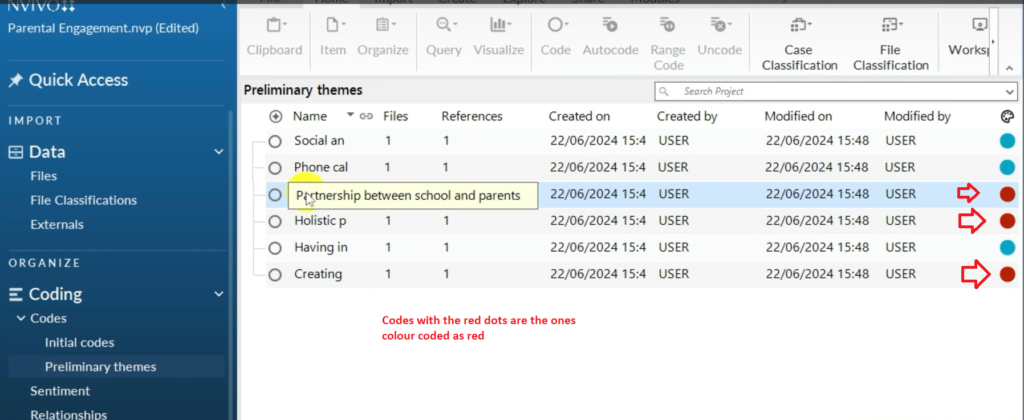
The Codes in Red
What do they mean? How can we form themes? We look for a pattern of shared meaning between these codes.
And now we can try to learn something. This code is partnership between school and parents. Holistic partnership between school and parents. Creating a community with a school at the centre community.
Now let’s double click on one of the codes. And look at the question that the interviewee asked.
You can see. People use the term parental engagement in a lot of different ways. In your experience, what does it mean in school when people talk about parental engagement?
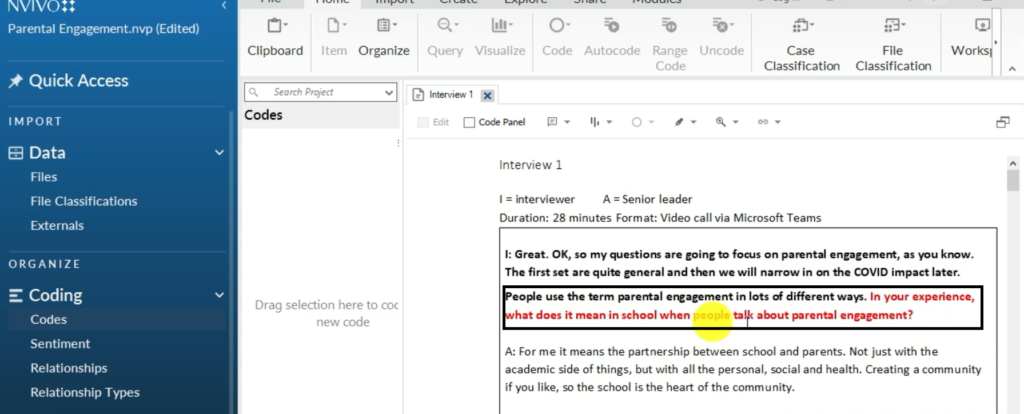
A Section of a Transcript in Nvivo 14
We will create a theme titled subjective meaning of parental engagement according to participants.
So right click here on the blank space, new code, this is a theme, this is not a code.
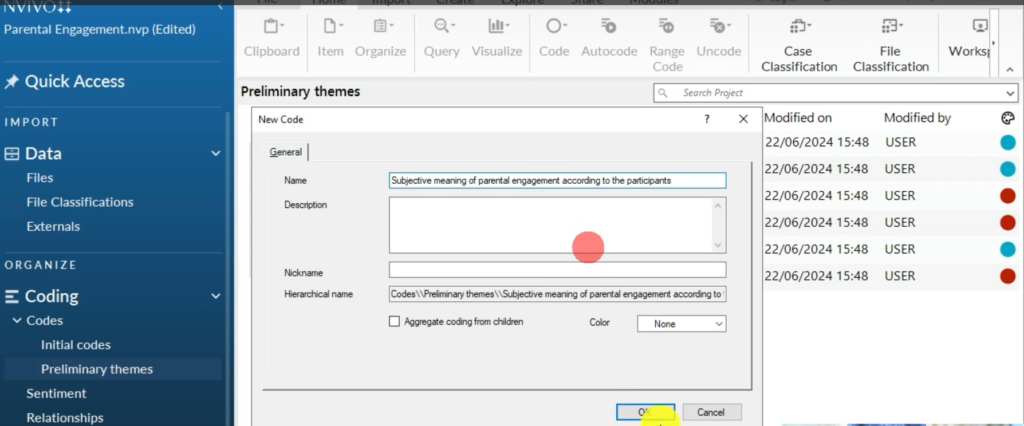
The Theme Subjective Meaning of Parents According to the Participants is Created
After I create that, I’m going to drag all the codes with a red colour code, into the theme subjective meaning of parental engagement according to the participants.
You can see, although I’m doing inductive analysis, the question that were asked in the interview will play a significant role in the establishment of my preliminary themes.
And now we have one preliminary theme there. Let’s look at the second batch of codes, the ones colour coded blue.
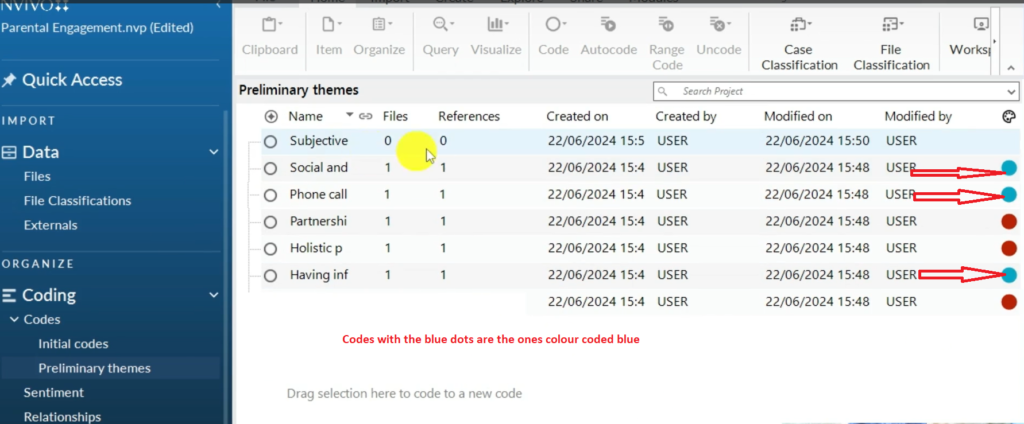
Codes Colour Coded Blue
What do they talk about?
They talk about social community-based event, phone calls, having informal in person chats with parents about their children.
Those are, if you remember, these are the second one. We coded them in blue types of parental engagement that are most effective,
So, we will create a theme called effective types of parental engagement.
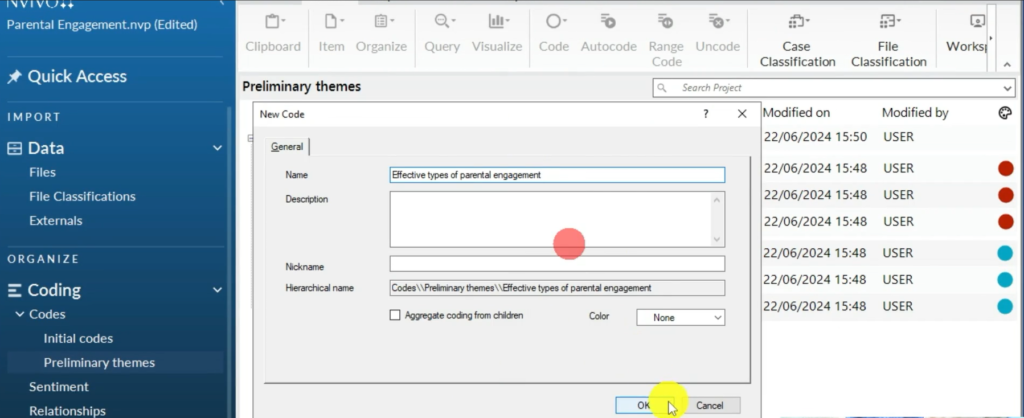
The Theme Effective Types of Parental Engagement is Created
Remember, these are, the codes in blue, they talk about effective types of parental engagement.
I drag and drop the codes in the theme effective type of parental engagement.
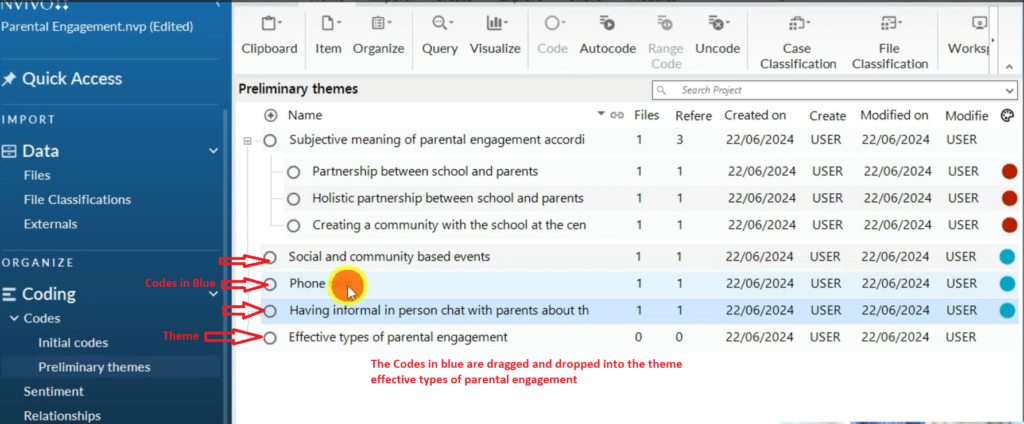
The Dragging and Dropping of Codes into a Theme
Now, look. I have my preliminary themes. These are two of my themes.
So, that’s the third step of Brown and Clark’s six step framework for thematic analysis, which is generating preliminary, provisional, or initial themes.
Revising and Reviewing Themes
Let’s move to the fourth step of the Brown and Clark’s six step framework for conducting thematic analysis.
The fourth step is revising and reviewing the themes.

Revising and Reviewing Themes
Now I’m going to look at this, what did I call this theme? Do the codes fit with the theme? Subjective meaning of parental engagement according to the participants.
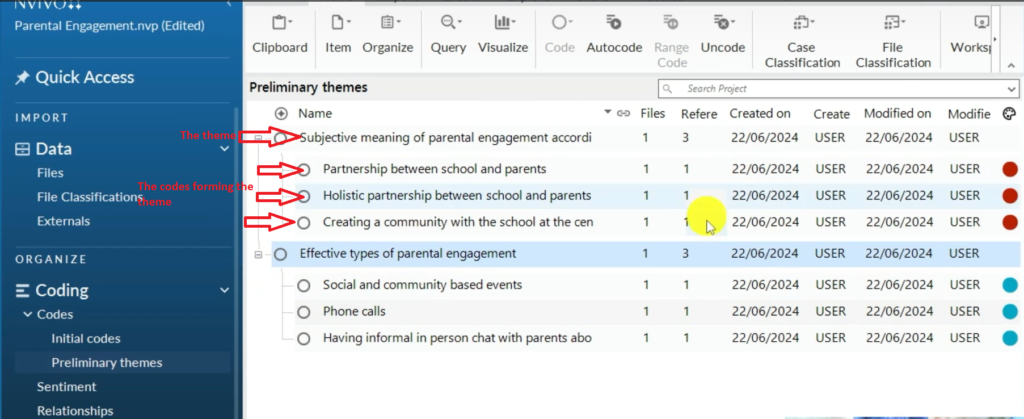
A Theme and the Codes forming a Theme
I can rename the theme and call it participants subjective meaning of parental engagement.
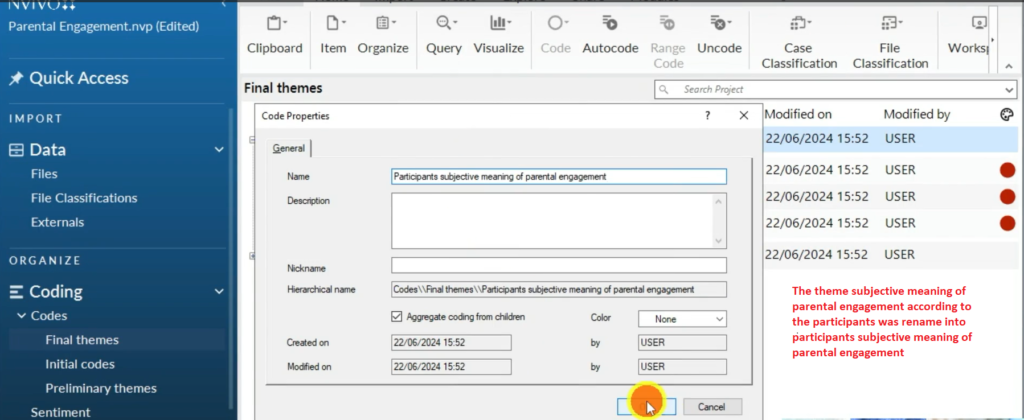
The Renaming of a Theme
That’s how you review, revise your theme.
That’s the fourth step of Braun and Clark.
Let’s check the other one, effective types of parental engagement. That’s okay.

The Theme is Not Renamed because it Sounds Okay
Defining and Naming Themes
Let’s move to the fifth step of the Brown and Clark six step framework for thematic analysis, which is defining and naming themes.

Defining and Naming Themes
I’m going to right click on the themes, go to code properties, and put a description.
The description for the theme participants subjective meaning of parental engagement is; This included the participants own definition of parents engagement.
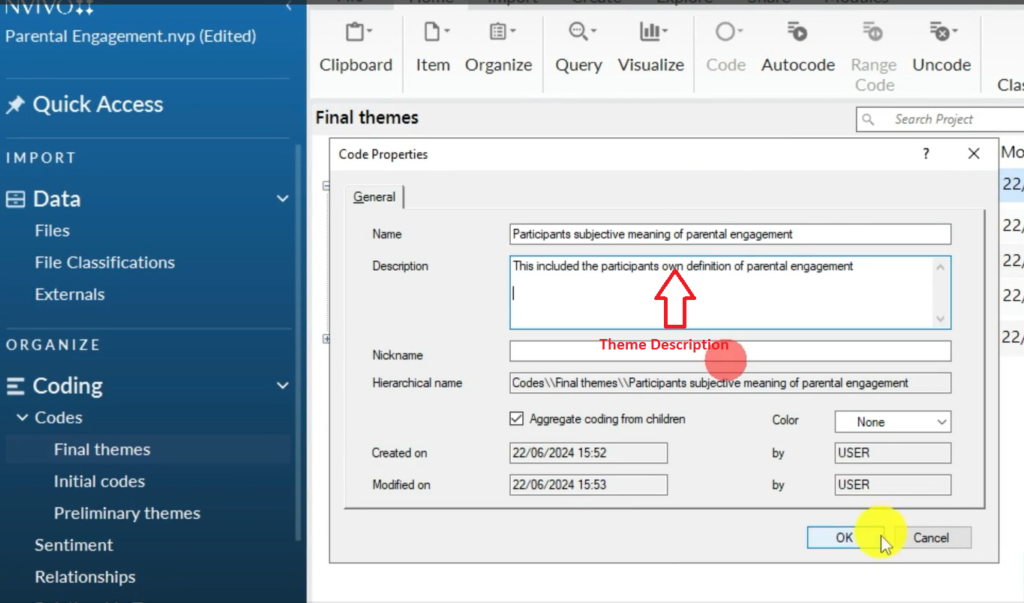
Theme Description
Then we have another theme effective types of parental engagement. The description for the theme is; This theme represents the parental engagement approaches that the participants find to be most effective.
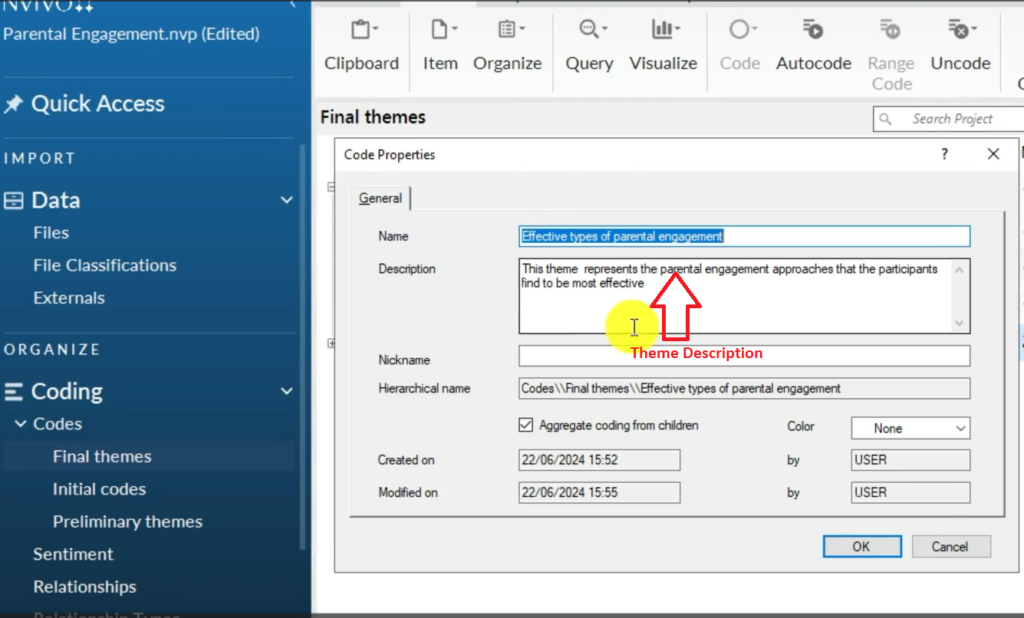
Theme Description
If you look at code properties, you can see the description.
Now, that’s how you conduct the fifth step of the Brown and Clark six step process for thematic analysis, which is defining and naming themes.
We have added clear names and descriptions for all our themes.
Writing the Findings Report
Now, the final step. Of the Brown and Clark six step framework for thematic analysis is coming up with findings report.
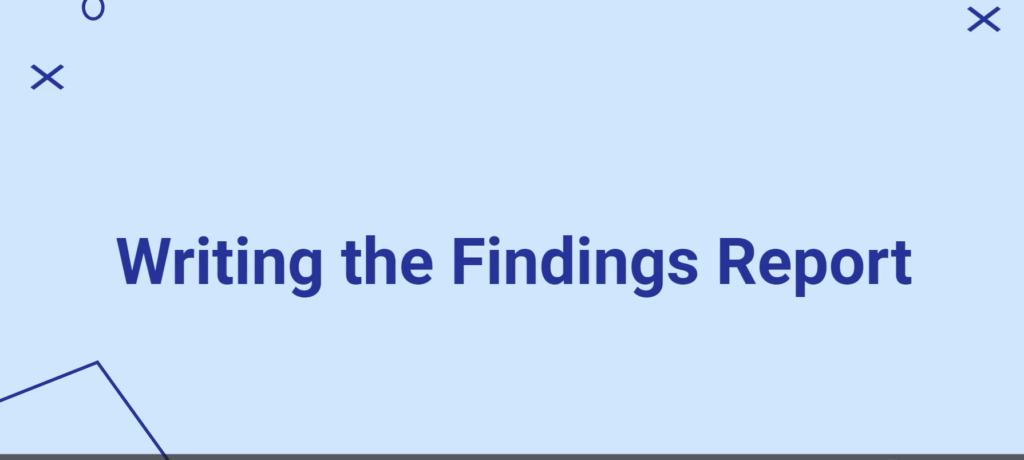
Writing the Findings Report
A findings report is made up of codes, sub themes, and themes that are brought together through a narrative that clearly explain the main issues that came out when conducting either semi structured or regular interviews.
Now, I’ve already done the report, as you can see.
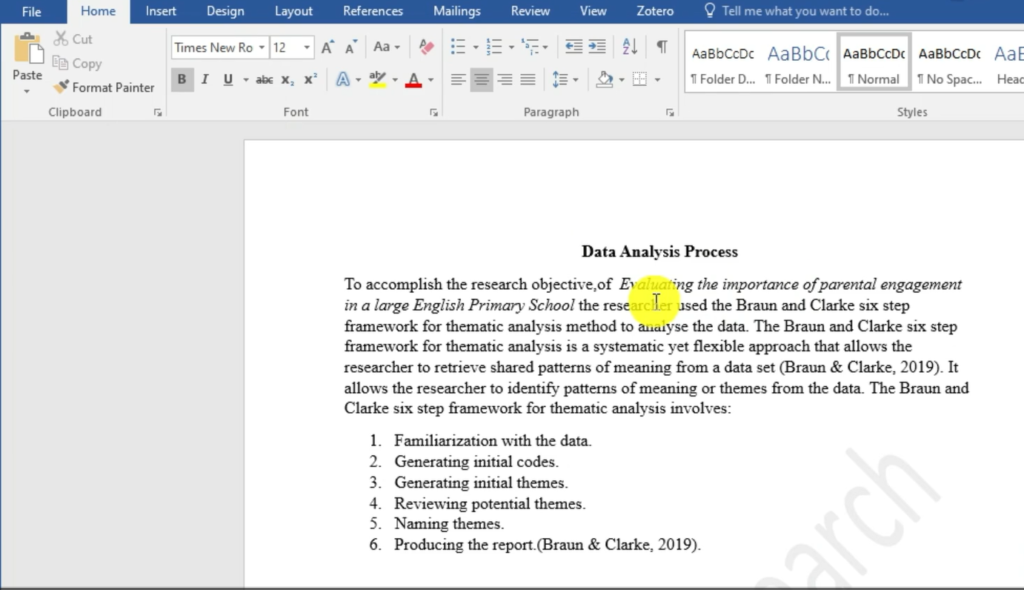
A Section of the Findings Report
In my findings report, the first thing that I do is highlight the data analysis process, the Brown and Clark six step framework for thematic analysis.
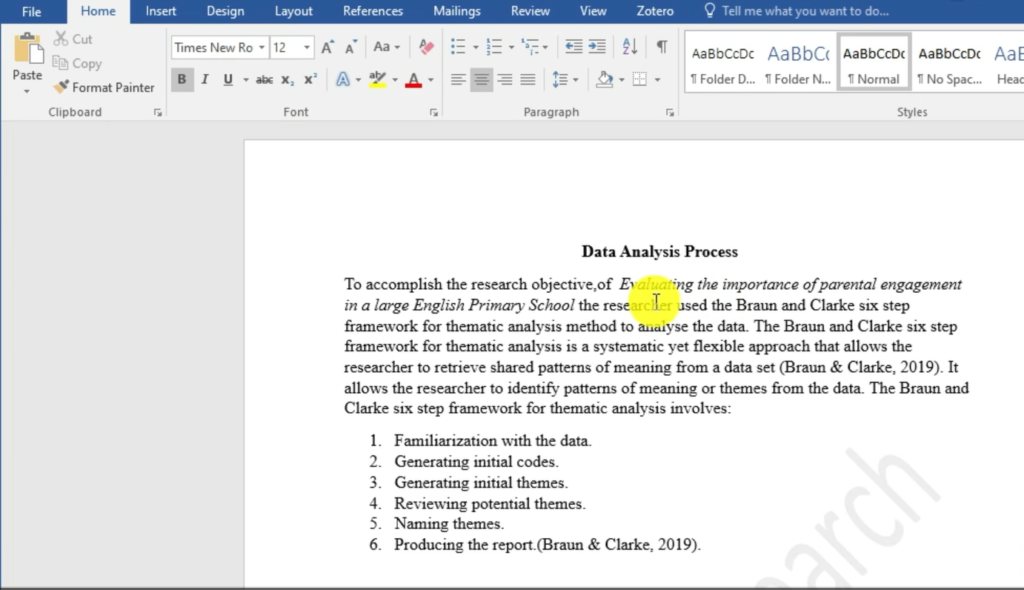
A Description of the Data Analysis Process
I’ll also include tables like this.
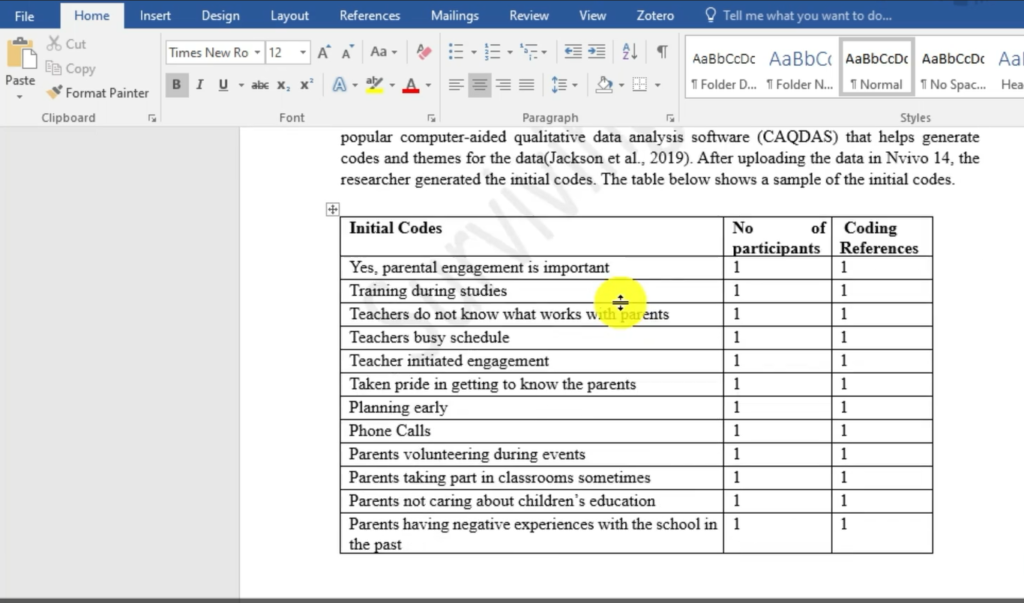
A Table in the Findings Report
And a mind map like this.
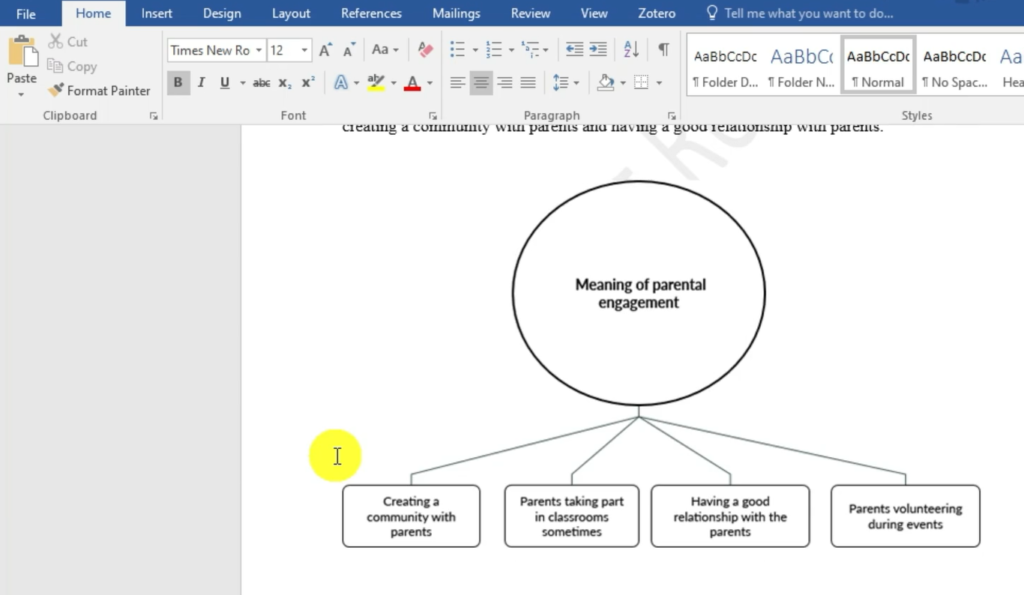
A Mind Map in the Findings Report
Kindly check the link 9 Ways to visualize in Nvivo for more tips on how to visualize data in while writing the report.
Basically, this is the complete work. You can see I have five main themes and a number of codes.

The Five Themes the Came up After Data Analysis
I have not gone through the report one by one, but I have attached it in this link Semi Structured Interviews Resources
